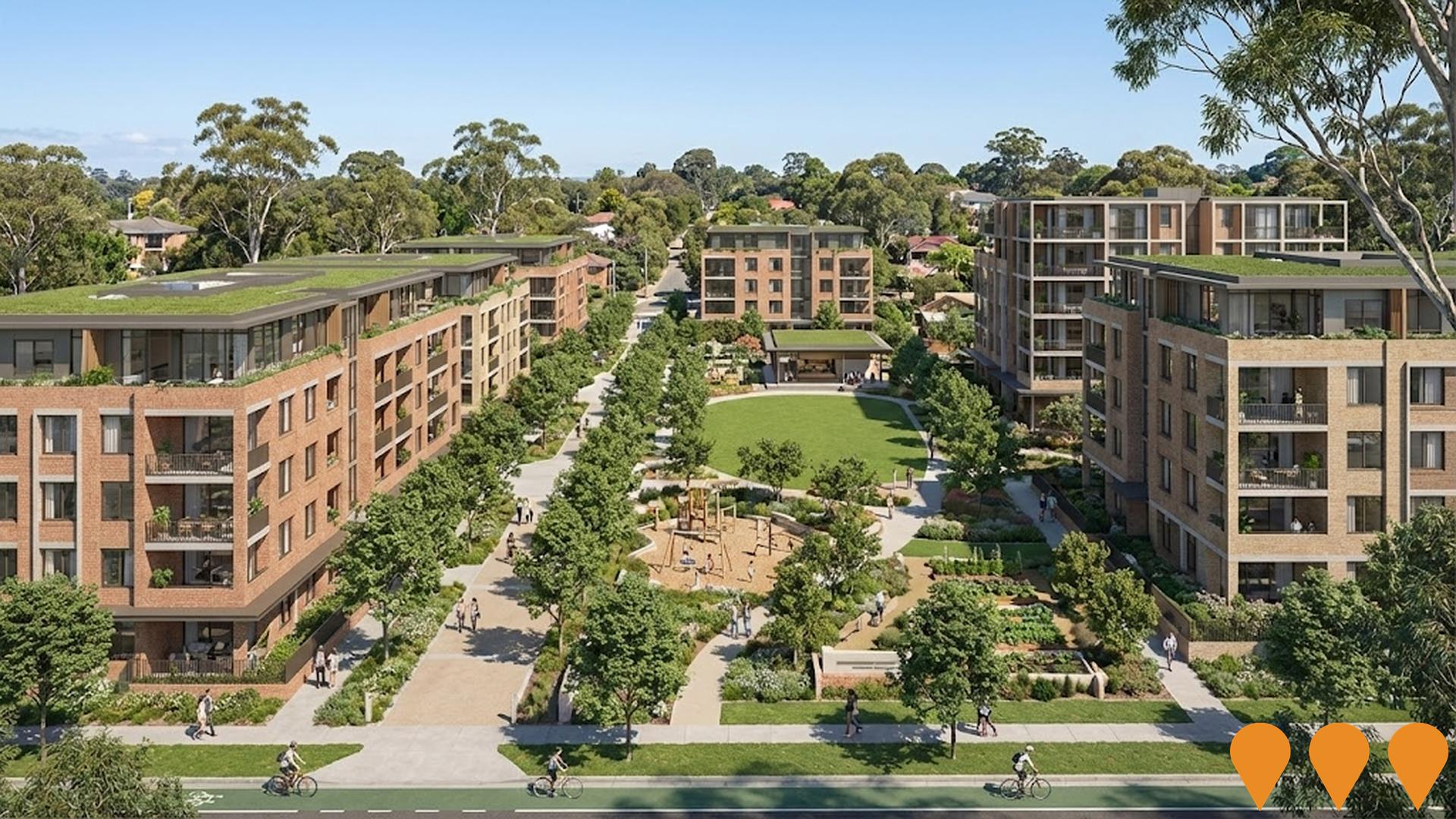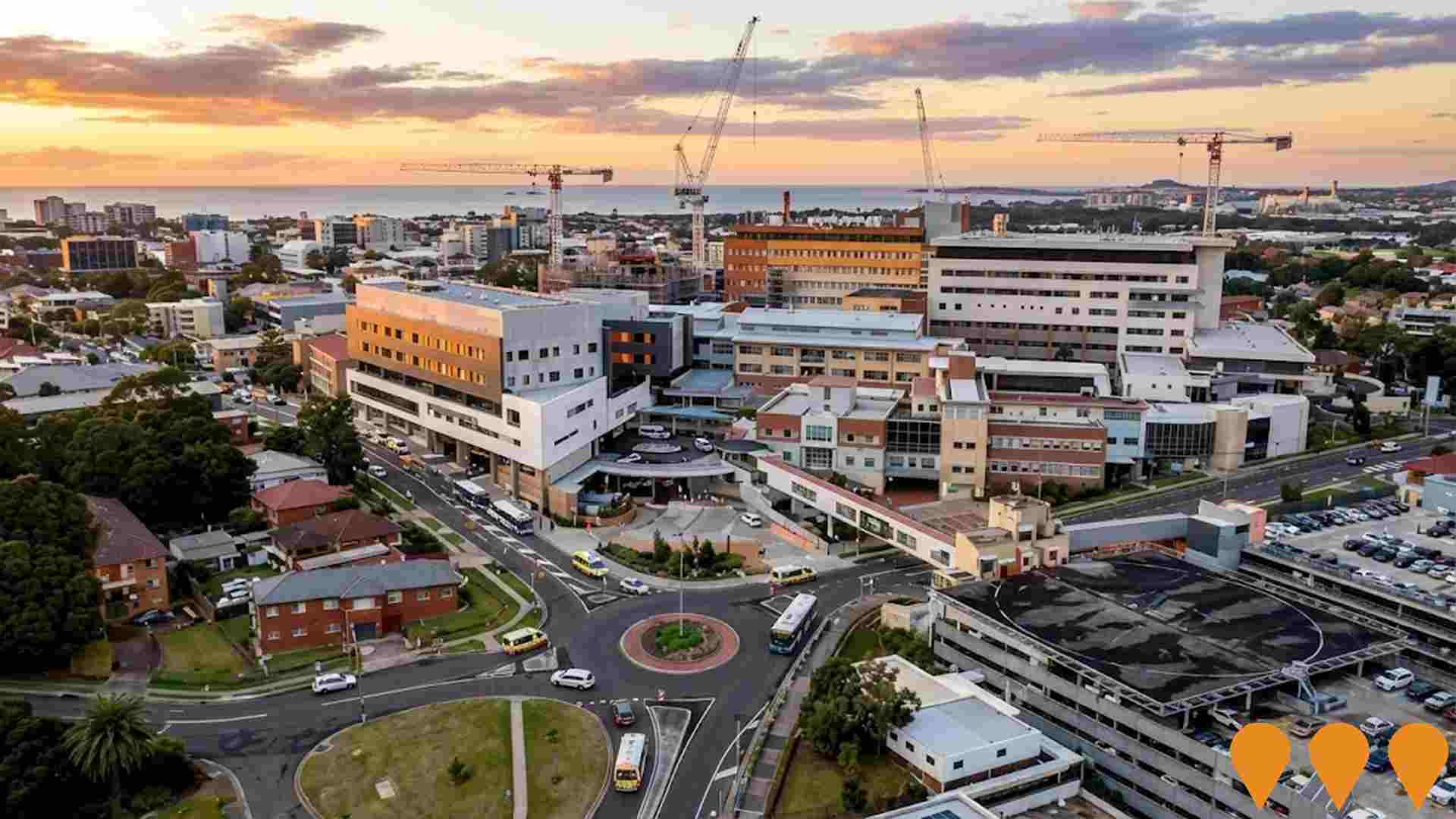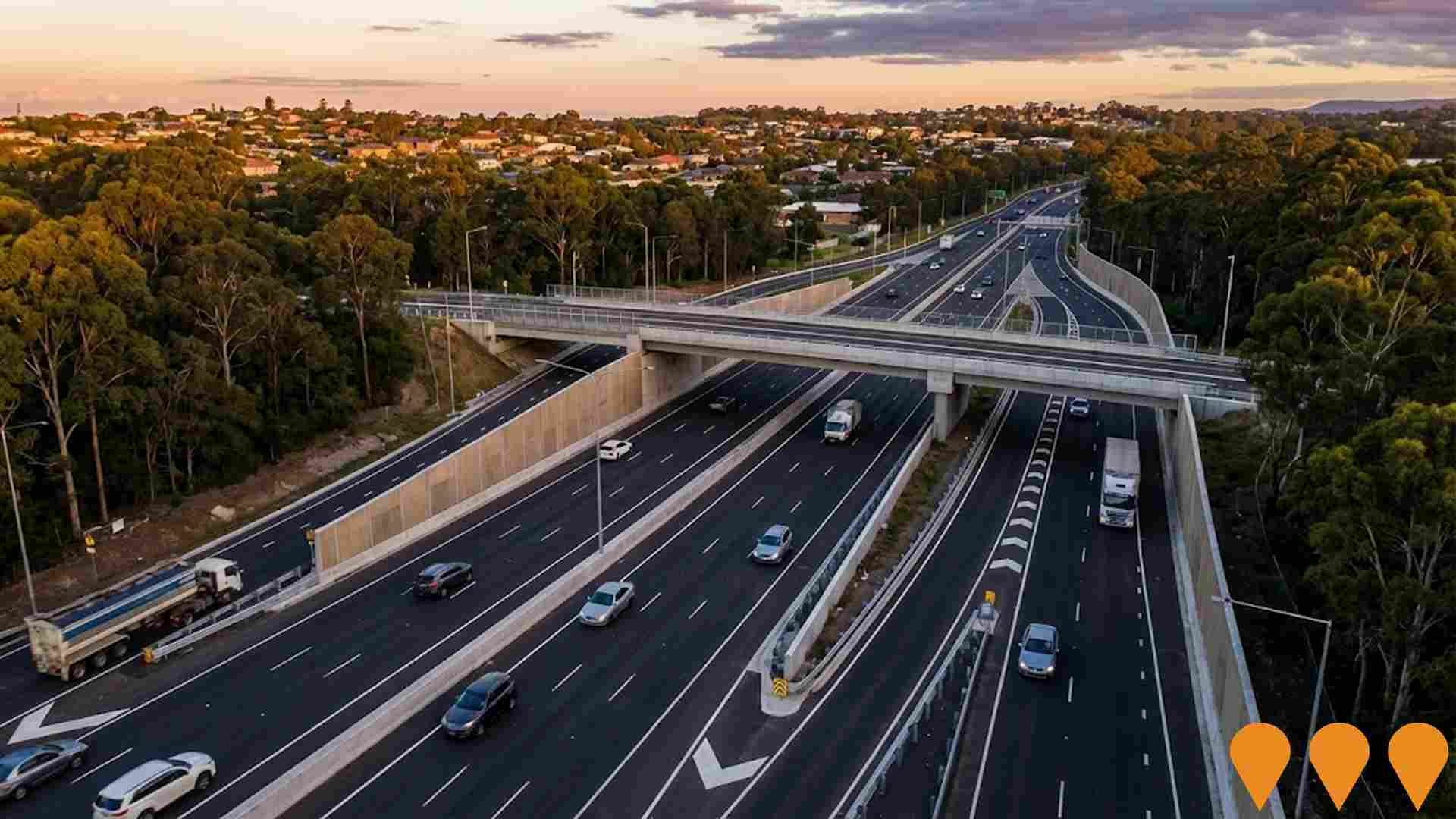Chart Color Schemes
est. as @ -- *
ABS ERP | -- people | --
2021 Census | -- people
Sales Activity
Curious about local property values? Filter the chart to assess the volume and appreciation (including resales) trends and regional comparisons, or scroll to the map below view this information at an individual property level.
Find a Recent Sale
Sales Detail
Population
An assessment of population growth drivers in Balgownie - Fairy Meadow reveals an overall ranking slightly below national averages considering recent, and medium term trends
Balgownie-Fairy Meadow's population is around 22,169 as of Aug 2025. This reflects a growth from the 2021 Census figure of 21,519 people, an increase of 650 individuals (3.0%). The change was inferred from the estimated resident population of 22,124 in June 2024 and an additional 77 validated new addresses since the Census date. This results in a population density ratio of 1,808 persons per square kilometer, which is higher than the average across national locations assessed by AreaSearch. The area's 3.0% growth since census places it within 0.9 percentage points of the SA3 area (3.9%), indicating strong growth fundamentals. Overseas migration contributed approximately 87.0% of overall population gains during recent periods, driving primary growth for the area.
AreaSearch adopts ABS/Geoscience Australia projections for each SA2 area, released in 2024 with a base year of 2022. For areas not covered by this data, AreaSearch uses NSW State Government's SA2 level projections, released in 2022 with a base year of 2021. Growth rates by age group from these aggregations are applied to all areas for years 2032 to 2041. Future population dynamics anticipate an above median growth for national non-metropolitan areas, with the area projected to increase by 4,334 persons to 2041 based on latest numbers, recording a total gain of 19.4% over the 17 years.
Frequently Asked Questions - Population
Development
AreaSearch analysis of residential development drivers sees Balgownie - Fairy Meadow recording a relatively average level of approval activity when compared to local markets analysed countrywide
Balgownie-Fairy Meadow averaged approximately 89 new dwelling approvals annually. Between FY21 and FY25, a total of 445 homes were approved, with an additional 20 approved in FY26 to date. Over these five years, there was an average of 0.6 new residents per year per dwelling constructed.
This suggests that new supply is keeping pace with or exceeding demand, providing ample buyer choice and capacity for population growth beyond current forecasts. The average construction value of new homes was $555,000, which is moderately above regional levels, indicating an emphasis on quality construction. In FY26 to date, there have been $34.9 million in commercial approvals, demonstrating high levels of local commercial activity. Compared to the Rest of NSW, Balgownie-Fairy Meadow shows approximately 75% of the construction activity per person and ranks among the 58th percentile nationally. New development consists of 43.0% standalone homes and 57.0% medium and high-density housing, representing a notable shift from the area's existing housing composition, which is currently 68.0% houses.
This trend indicates decreasing availability of developable sites and reflects changing lifestyles and the need for more diverse, affordable housing options. With around 269 people per dwelling approval, Balgownie-Fairy Meadow shows characteristics of a low density area. Population forecasts indicate that the area will gain approximately 4,289 residents by 2041. At current development rates, housing supply may struggle to match population growth, potentially heightening buyer competition and supporting price increases.
Frequently Asked Questions - Development
Infrastructure
Balgownie - Fairy Meadow has strong levels of nearby infrastructure activity, ranking in the top 40% nationally
Changes to local infrastructure significantly influence an area's performance. AreaSearch has identified 26 projects likely to impact the area. Key projects include Mount Ousley Interchange, Sylvan Ridge, Balgownie Mountain Bike Trail Infrastructure, and 68-74 Princes Highway Mixed-Use Development. The following list details those most relevant.
Professional plan users can use the search below to filter and access additional projects.
INFRASTRUCTURE SEARCH
 Denotes AI-based impression for illustrative purposes only, not to be taken as definitive under any circumstances. Please follow links and conduct other investigations from the project's source for actual imagery. Developers and project owners wishing us to use original imagery please Contact Us and we will do so.
Denotes AI-based impression for illustrative purposes only, not to be taken as definitive under any circumstances. Please follow links and conduct other investigations from the project's source for actual imagery. Developers and project owners wishing us to use original imagery please Contact Us and we will do so.
Frequently Asked Questions - Infrastructure
Irvine Street Gwynneville Precinct Planning Proposal
Planning Proposal lodged by Homes NSW to rezone the precinct for urban renewal, enabling up to 1,250 homes (3-6 storeys), with 50% dedicated to social and affordable housing, and new public open space. The proposal is currently under public exhibition and assessment by Wollongong City Council after receiving a Gateway Determination from the NSW Department of Planning, Housing and Infrastructure.

Fairy Meadow Ambulance Station
New purpose-built ambulance station with internal parking for up to five emergency vehicles, a wash bay, administration and office areas, staff rest facilities, logistics and storage. Delivered under the NSW RAIR program to enhance emergency health care for the Wollongong community.

Wollongong Health Precinct Strategy
Place-based strategy to guide future development of the Wollongong Health Precinct west of Wollongong CBD. Includes expansion of health facilities, affordable housing for key workers, and improved transport links.

Corrimal Transport Oriented Development Area
The Transport Oriented Development Program enables higher density residential development within 400m of Corrimal station, allowing residential flat buildings up to 22m height with FSR 2.5:1 and shop top housing up to 24m, requiring a minimum 2% affordable housing contribution in perpetuity for developments over 2000 sqm GFA, to increase housing supply near public transport.

Mount Ousley Interchange
Jointly funded $402 million project replacing the existing at-grade intersection of the M1 Princes Motorway and Mount Ousley Road at the base of Mount Ousley. The project includes heavy vehicle bypass lanes separating cars and trucks, separate off-ramps for southbound vehicles, two heavy vehicle safety ramps, a bridge over the motorway with signalized intersections, a commuter car park, shared path connections including a bridge over Mount Ousley Road, pedestrian and cyclist infrastructure improvements, and noise walls. Major construction commenced in late 2024 with contractor Fulton Hogan. The project aims to improve safety by separating light and heavy vehicles, reduce travel times, support growing freight movements serving over 50,000 daily motorists, and improve access between the motorway, Wollongong CBD, and University of Wollongong.

University of Wollongong Campus Master Plan
A 20-year master plan for the University of Wollongong's main campus, focusing on new academic buildings, expanded student accommodation, advanced research facilities, and enhanced campus connectivity. The plan aims to support increased student enrollment, promote sustainability, and strengthen research capabilities.

Balgownie Mountain Bike Track Network
The Balgownie Mountain Bike Track Network is part of the Illawarra Escarpment Mountain Bike Project, proposing a sustainable 25 km mountain bike trail network including new tracks, upgrades to existing unsanctioned tracks, and access trails. It aims to provide recreational opportunities for various skill levels while minimizing environmental impacts and rehabilitating unauthorized areas. As of September 2024, the network alignment has been adjusted following consultations, and the plan is expected to be finalized in the coming months.

Fairy Meadow Station Upgrade
Accessibility upgrade under the Transport Access Program, including two new lifts, a new family accessible toilet on each platform, upgraded CCTV and lighting for improved safety, upgraded footpaths, a new kiss and ride space, a new Boarding Assistance Zone, hearing loops, removal of the existing track level crossing, and a new public art display.

Employment
Employment performance in Balgownie - Fairy Meadow has been below expectations when compared to most other areas nationally
Balgownie-Fairy Meadow has an educated workforce with prominent representation in essential services sectors. The unemployment rate was 4.3% as of June 2021, with estimated employment growth of 1.0% over the preceding year.
As of June 2025, 11,031 residents are employed while the unemployment rate is 0.6% higher than Rest of NSW's rate of 3.7%. Workforce participation in Balgownie-Fairy Meadow is similar to Rest of NSW at 56.4%. Major employment sectors include health care & social assistance, education & training, and retail trade. The area shows strong specialization in education & training with an employment share 1.3 times the regional level, while agriculture, forestry & fishing has lower representation at 0.2% compared to the regional average of 5.3%.
Over the year to June 2025, employment increased by 1.0%, labour force grew by 0.6%, reducing the unemployment rate by 0.3 percentage points. In contrast, Rest of NSW saw a 0.1% decrease in employment, a 0.3% increase in labour force, and an unemployment rise of 0.4 percentage points. Jobs and Skills Australia's national employment forecasts from May 2025 project national employment growth of 6.6% over five years and 13.7% over ten years. Applying these projections to Balgownie-Fairy Meadow's employment mix suggests local growth of approximately 6.7% over five years and 13.8% over ten years, though these are simple weighted extrapolations for illustrative purposes only.
Frequently Asked Questions - Employment
Income
Income levels align closely with national averages, indicating typical economic conditions for Australian communities according to AreaSearch analysis
AreaSearch's latest postcode level ATO data for financial year 2022 shows Balgownie - Fairy Meadow had a median income among taxpayers of $52,767 and an average of $70,922. These figures are higher than the national averages. Rest of NSW had a median income of $49,459 and an average of $62,998 during the same period. Based on Wage Price Index growth of 12.61% since financial year 2022, estimated incomes for September 2025 would be approximately $59,421 (median) and $79,865 (average). The 2021 Census data ranks Balgownie - Fairy Meadow's household, family, and personal incomes modestly, between the 34th and 44th percentiles. The earnings profile shows that 27.5% of locals (6,096 people) fall within the $1,500 - $2,999 income category, similar to the metropolitan region where 29.9% occupy this range. Housing affordability pressures are severe, with only 83.7% of income remaining after housing costs, ranking at the 44th percentile. The area's SEIFA income ranking places it in the 6th decile.
Frequently Asked Questions - Income
Housing
Balgownie - Fairy Meadow displays a diverse mix of dwelling types, with above-average rates of outright home ownership
Balgownie-Fairy Meadow's dwelling structure, as per the latest Census, consisted of 68.1% houses and 32.0% other dwellings (semi-detached, apartments, 'other' dwellings). This compares to Non-Metro NSW's 58.9% houses and 41.1% other dwellings. Home ownership in Balgownie-Fairy Meadow stood at 39.4%, with mortgaged dwellings at 28.2% and rented ones at 32.3%. The median monthly mortgage repayment was $2,219, higher than Non-Metro NSW's average of $2,189. Median weekly rent in the area was $380, compared to Non-Metro NSW's $400. Nationally, Balgownie-Fairy Meadow's median mortgage repayments were significantly higher at $2,219 than the Australian average of $1,863, while rents were also higher at $380 compared to the national figure of $375.
Frequently Asked Questions - Housing
Household Composition
Balgownie - Fairy Meadow features high concentrations of group households, with a fairly typical median household size
Family households account for 67.3% of all households, including 29.1% couples with children, 25.3% couples without children, and 11.9% single parent families. Non-family households constitute the remaining 32.7%, with lone person households at 27.5% and group households comprising 5.1%. The median household size is 2.5 people, which aligns with the average for the Rest of NSW.
Frequently Asked Questions - Households
Local Schools & Education
The educational profile of Balgownie - Fairy Meadow exceeds national averages, with above-average qualification levels and academic performance metrics
The area's university qualification rate is 29.5% among residents aged 15+, exceeding the Rest of NSW average of 21.3% and the SA4 region average of 25.2%. Bachelor degrees are the most common at 18.9%, followed by postgraduate qualifications (7.9%) and graduate diplomas (2.7%). Vocational credentials are also prevalent, with 34.4% of residents aged 15+ holding such qualifications - advanced diplomas account for 10.7% and certificates for 23.7%.
Educational participation is high, with 31.0% of residents currently enrolled in formal education. This includes 9.1% in tertiary education, 8.6% in primary education, and 6.8% pursuing secondary education. There are 10 schools operating within Balgownie - Fairy Meadow, educating approximately 3,637 students. The area has typical Australian school conditions (ICSEA: 1042) with balanced educational opportunities. The educational mix includes 6 primary, 3 secondary, and 1 K-12 school.
Frequently Asked Questions - Education
Schools Detail
Nearby Services & Amenities
Transport
Transport servicing is good compared to other areas nationally based on assessment of service frequency, route connectivity and accessibility
Balgownie-Fairy Meadow has 192 active public transport stops. These comprise a mix of train and bus services. There are 59 individual routes operating in total.
Collectively, these routes provide 2,662 weekly passenger trips. Transport accessibility is rated as excellent, with residents typically located 147 meters from the nearest stop. Service frequency averages 380 trips per day across all routes, equating to approximately 13 weekly trips per individual stop.
Frequently Asked Questions - Transport
Transport Stops Detail
Health
Health performance in Balgownie - Fairy Meadow is lower than average with common health conditions somewhat prevalent across both younger and older age cohorts
Balgownie-Fairy Meadow faces significant health challenges, with common health conditions somewhat prevalent across both younger and older age cohorts.
The rate of private health cover is very high at approximately 55% of the total population (~12,192 people). The most common medical conditions in the area are arthritis and mental health issues, impacting 9.2 and 8.4% of residents respectively. 67.4% of residents declared themselves completely clear of medical ailments, compared to 68.6% across Rest of NSW. The area has 19.5% of residents aged 65 and over (4,320 people), which is higher than the 17.7% in Rest of NSW. Health outcomes among seniors present some challenges, broadly in line with the general population's health profile.
Frequently Asked Questions - Health
Cultural Diversity
The level of cultural diversity witnessed in Balgownie - Fairy Meadow was found to be above average when compared nationally for a number of language and cultural background related metrics
Balgownie-Fairy Meadow had a higher cultural diversity, with 22.9% of its population born overseas and 18.4% speaking languages other than English at home. Christianity was the dominant religion, comprising 54.7%. Islam was overrepresented at 3.4%, compared to the Rest of NSW's 2.5%.
The top three ancestry groups were English (24.6%), Australian (24.4%), and Other (8.7%). Italian ethnicity was notably higher at 7.7% compared to the regional average of 4.5%. Serbian and Macedonian ethnicities also had slight overrepresentations, at 0.7% and 1.0%, respectively.
Frequently Asked Questions - Diversity
Age
Balgownie - Fairy Meadow's population is slightly older than the national pattern
The median age in Balgownie-Fairy Meadow is 39 years, which is significantly lower than Rest of NSW's average of 43 but closely aligns with Australia's median age of 38 years. Compared to Rest of NSW, Balgownie-Fairy Meadow has a higher proportion of residents aged 15-24 (16.7%) but fewer residents aged 65-74 (9.2%). According to the 2021 Census, the median age in Balgownie-Fairy Meadow decreased by 1.1 years from 40 to 39 between 2016 and 2021, indicating a shift towards a younger demographic. The percentage of residents aged 15-24 increased from 14.2% to 16.7%, while the percentage of those aged 25-34 rose from 12.1% to 14.3%. Conversely, the proportion of residents aged 45-54 decreased from 12.3% to 10.8%, and the percentage of those aged 55-64 dropped from 12.2% to 10.9%. Demographic projections suggest that Balgownie-Fairy Meadow's age profile will change significantly by 2041. The number of residents aged 25-34 is projected to increase by 1,532 people (48%), from 3,174 to 4,707. Meanwhile, the number of residents aged 55-64 is expected to decrease by 297.

